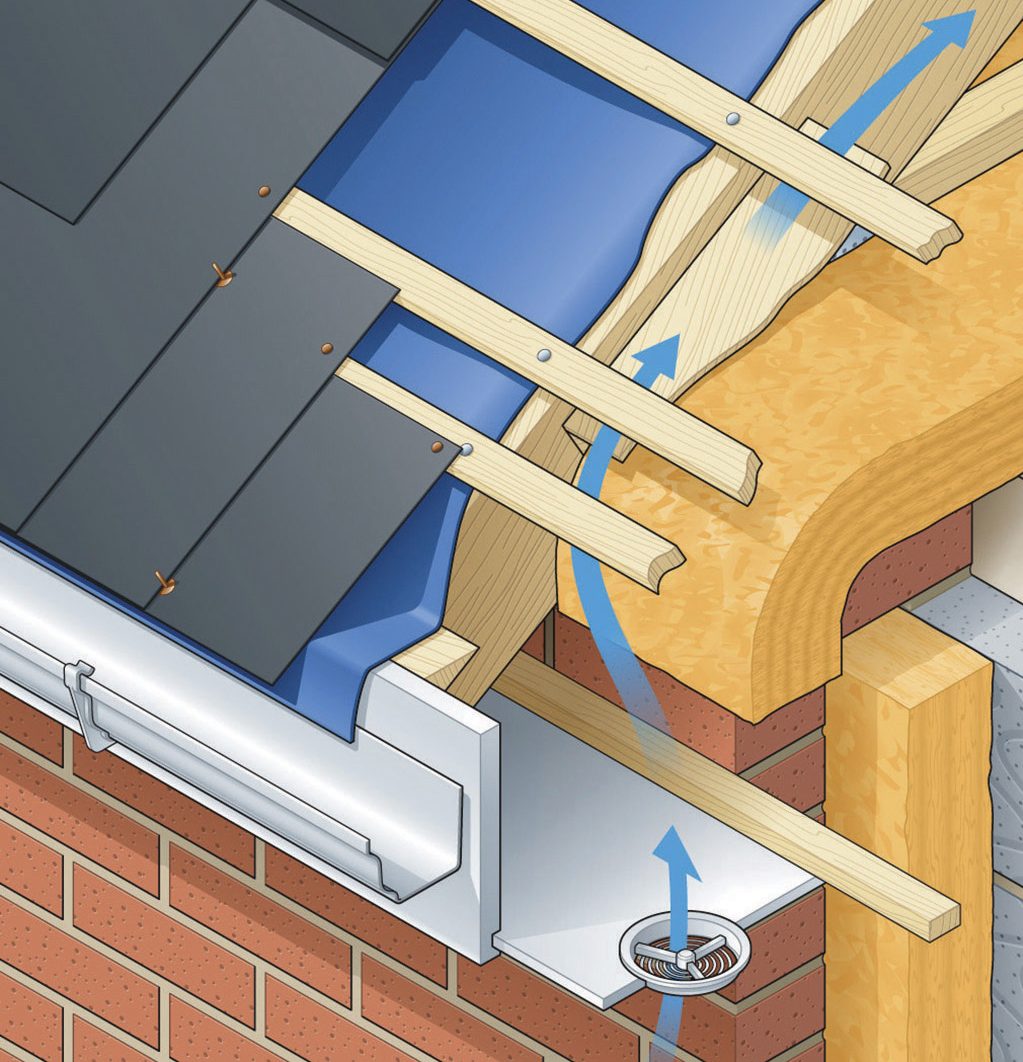
Providing adequate ventilation is always essential for tight fitting roof coverings such as fibre cement slates, even if you’re using a breathable underlay.
Convenience is often cited as one of the many reasons for the popularity of breathable underlays. The logic applied is that if you fit a breathable underlay when installing your slates and tiles, you can forget about any other sort of roof ventilation because the membrane takes care of it.
The reality is that, while breather membranes undoubtedly have many brilliant advantages, you still need to make sure you ventilate the roof space when you’re using them. This is particularly true when you’re working with tight-fitting roof coverings such as fibre cement slates.
The tight fit resulting from using smooth and uniform materials such as fibre cement slates reduces the amount of passive ventilation you get from using more uneven products. This means the batten void will still need ventilation to avoid the build-up of condensation.
The requirement is covered by the current British Standards on control of ventilation in buildings, BS 5250:2011. According to the Standards, fibre cement slates must be considered as ‘tight fitting’, and so the roof space and/or batten cavity must always be ventilated regardless of the type of underlay used.
While providing this ventilation is clearly not a nice-to-have (…it’s a requirement), it’s quite often overlooked. This can result in significant remedial work, inconvenience and disputes over who is responsible. By following the code of practice it should result in a problem free construction and ongoing excellent performance.
As the number of options and conditions covered in the Standards can be a little bewildering, here’s a simplified extract to use as a rule of thumb:
| WARM ROOF | COLD ROOF | |
|---|---|---|
| Low Resistance Breather* | Ventilate batten space (i.e. counter battens above underlay)
An AVCL should be applied on the warm side of the insulation at the ceiling line. | Provide dual ventilation of both batten space (i.e. counter battens above underlay) and loft.
or provide 25mm eaves to eaves or gable to gable ventilation. |
| High Resistance Traditional** | Ventilate between insulation and underlay (i.e. counter battens below underlay)
AVCL should be applied on the warm side (below) the insulation. | Up to 35° pitch and 10m span, eaves to eaves, or gable to gable sufficient
If roofs exceed these dimensions or are monopitch or lean-to, a 5mm slot at ridge is required. |
* Low Resistance Breather has a water vapour resistance less than 0.25MN.s/g
** High Resistance Traditional has a water vapour resistance greater than to 0.25MN.s/g

